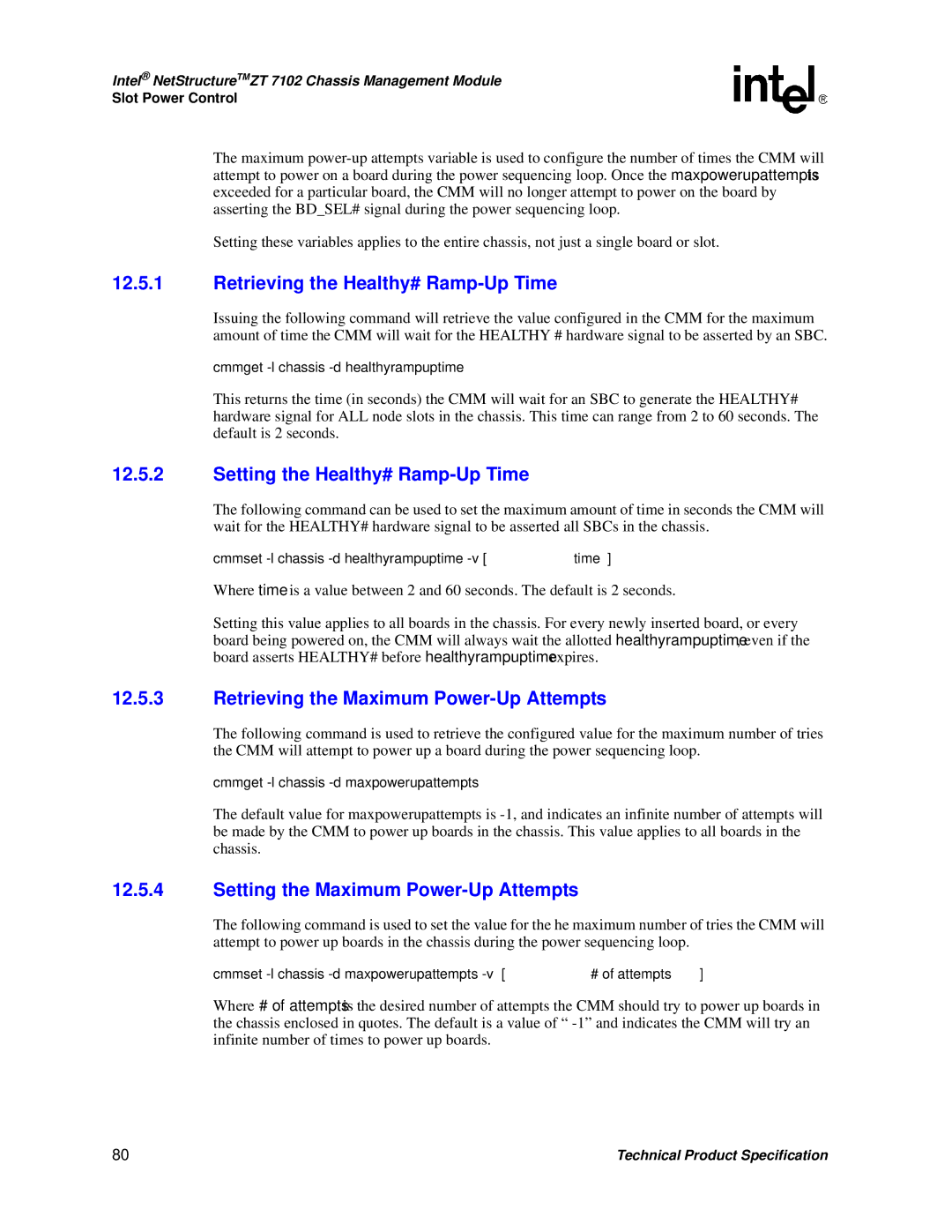Intel® NetStructureTMZT 7102 Chassis Management Module
Slot Power Control
The maximum
Setting these variables applies to the entire chassis, not just a single board or slot.
12.5.1Retrieving the Healthy# Ramp-Up Time
Issuing the following command will retrieve the value configured in the CMM for the maximum amount of time the CMM will wait for the HEALTHY # hardware signal to be asserted by an SBC.
cmmget
This returns the time (in seconds) the CMM will wait for an SBC to generate the HEALTHY# hardware signal for ALL node slots in the chassis. This time can range from 2 to 60 seconds. The default is 2 seconds.
12.5.2Setting the Healthy# Ramp-Up Time
The following command can be used to set the maximum amount of time in seconds the CMM will wait for the HEALTHY# hardware signal to be asserted all SBCs in the chassis.
cmmset
Where time is a value between 2 and 60 seconds. The default is 2 seconds.
Setting this value applies to all boards in the chassis. For every newly inserted board, or every board being powered on, the CMM will always wait the allotted healthyrampuptime, even if the board asserts HEALTHY# before healthyrampuptime expires.
12.5.3Retrieving the Maximum Power-Up Attempts
The following command is used to retrieve the configured value for the maximum number of tries the CMM will attempt to power up a board during the power sequencing loop.
cmmget
The default value for maxpowerupattempts is
12.5.4Setting the Maximum Power-Up Attempts
The following command is used to set the value for the he maximum number of tries the CMM will attempt to power up boards in the chassis during the power sequencing loop.
cmmset
Where # of attempts is the desired number of attempts the CMM should try to power up boards in the chassis enclosed in quotes. The default is a value of “
80 | Technical Product Specification |
